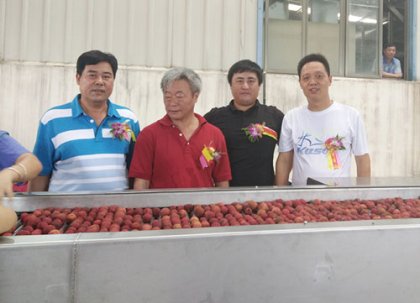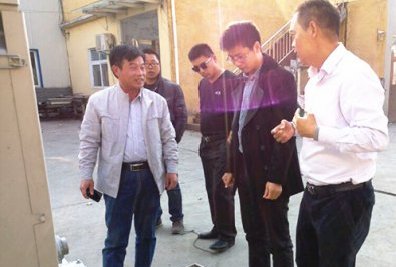How to make dried fruit? Fruit drying process
Dried fruit is made of fresh fruits and processed by peeling, coring, sugar water boiling, soaking, drying and packing. Dried fruits have under 20% water content, with dry surface and slight stickiness. Dried fruits have various kinds, such as dried berries, dried peaches, dried pineapple, dried banana, dried apricots, dried pears, etc. Dried fruits contain fruit acid, minerals and vitamin C, beneficial to human body.
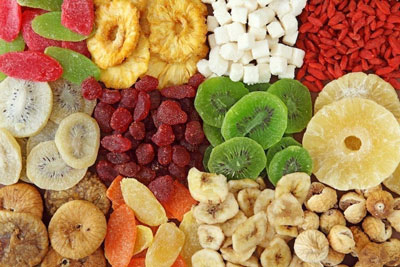
Traditional fruit drying process
Traditional dried fruits have high sugar content, which makes them sticky. It is produced by such processes: raw material selection, fresh fruit pre-treatment(peeling, coring, cutting, smoking), sugar water boiling, soaking, drying.
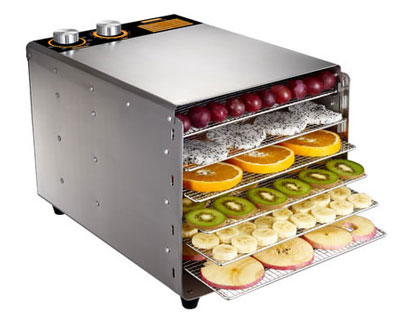
Vacuum sugar infusion process
Vacuum sugar infusion is a substitute for traditional boiling process. Traditionally, they heat up the fruit to make the vapor inside condense and form vacuum, so that the sugar liquid permeate into it under barometric pressure.
With vacuum sugar infusion process, they can expel the air in the intercellular space of the fruits, so the barometric pressure can press the sugar liquid into these places. In this way, the sugar liquid permeate into the fruits and make the fruit transparent. This process can reduce the nutrition loss in fruit boiling.
The Vacuum sugar infusion process for making dried peach includes:
-
Raw material selection: choose peaches of 70%-80% maturity. Dried fruits processed by vacuum sugar infusion have less sugar content, so the fruit consumption is high. Every 100kg boiled dried peaches consume 400kg fresh peaches, while this technology consume over 500kg.
-
Raw material pre-treatment: cleaning, peeling, cutting, coring.
-
Vacuumize the cut fruits with 0.25% NaHSO3 solution for 40 min (at 700 mmHg), then slowly deflated for 20 min.
-
Prepare sugar liquid. The sugar liquid should contain about 50% inverted sugar to prevent permeating sugar outside or crystallization.
-
Soak the fruits in 20%, 40% and 40% sugar liquid respectively for 12 hours.
-
Dry the fruits and package. Without heating process, the enzymes are not destroyed. As the SO2 content is low, the dried fruits may discolor during storage. We need to package them in vacuum, airtight and deoxidized containers.
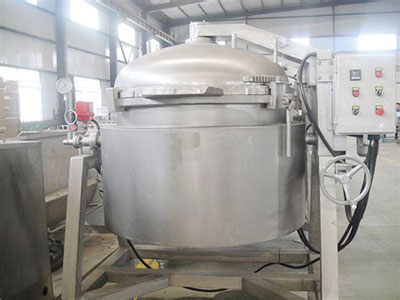
Sulfur smoking drying process
Traditional dried fruits are made by hand. Nowadays, in developed countries, the dried fruits are produced by mechanical processing line. It features high automation, high output, with the daily yield over 10 tons. Some small manufacturers adopts semi-manual and semi-mechanical production.
This kind of dried fruits are processed by sulfur smoking to make the fruit transparent and prolong its preservation. The production process of dried apricot is the following:
-
Raw material selection: dried fruits have high requirement on the raw materials. Take apricots for example. They must achieve 90% maturity. When you press on the surface, it should leaves a pit. Besides, it is required to have low water content and high sugar content.
-
Cutting: cut the mature fresh apricots into half, remove the cores and place it in wood trays. Then send these trays to the sulfur fumigated chamber. The wood trays have short side around. The bottom leaves no gap. Under the tray are 2 ledgers for ventilation when piling up.
-
Sulfur smoking: The sulfur smoking chamber adopt masonry and cement structure. Keep the temperature of the chamber between 40℃ and 50℃ during smoking. The wood trays are placed in carriers, with each containing 20-25 trays.
-
A ton of apricots need about 20-40kg sulfur. Make sure the sulfur is high quality and pure, the impurities under 1%, the arsenic under 0.015%, and no oil content. Add 5% potassium nitrate or sodium nitrate to the sulfur to help its burning. keep the SO2 concentration of 2-3%. Keep the sulfur continuous burning for 12 hours until the fruit turn transparent.
-
Air drying: place the smoked apricots in the sun for 1-2 days. When 50%-70% moisture has been removed, pile the plates up and place them in shade for 10 days until the moisture content drop to 15%. After that, you can put away the dried apricot for further processing.
-
Further processing: Soak the dried apricot into water for 2-4 hours, to let it absorb water. Clear the impurities on the apricot surface. Then, place them on the wood tray and send for smoking again. After that, dry them to lower the moisture content to 20%, and the dried apricots will look more transparent. The final products are required to have less than 0.2% SO2 content.
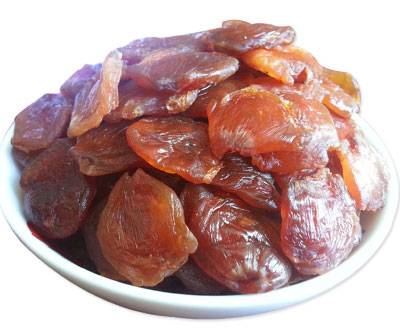
Get in Touch Now!





